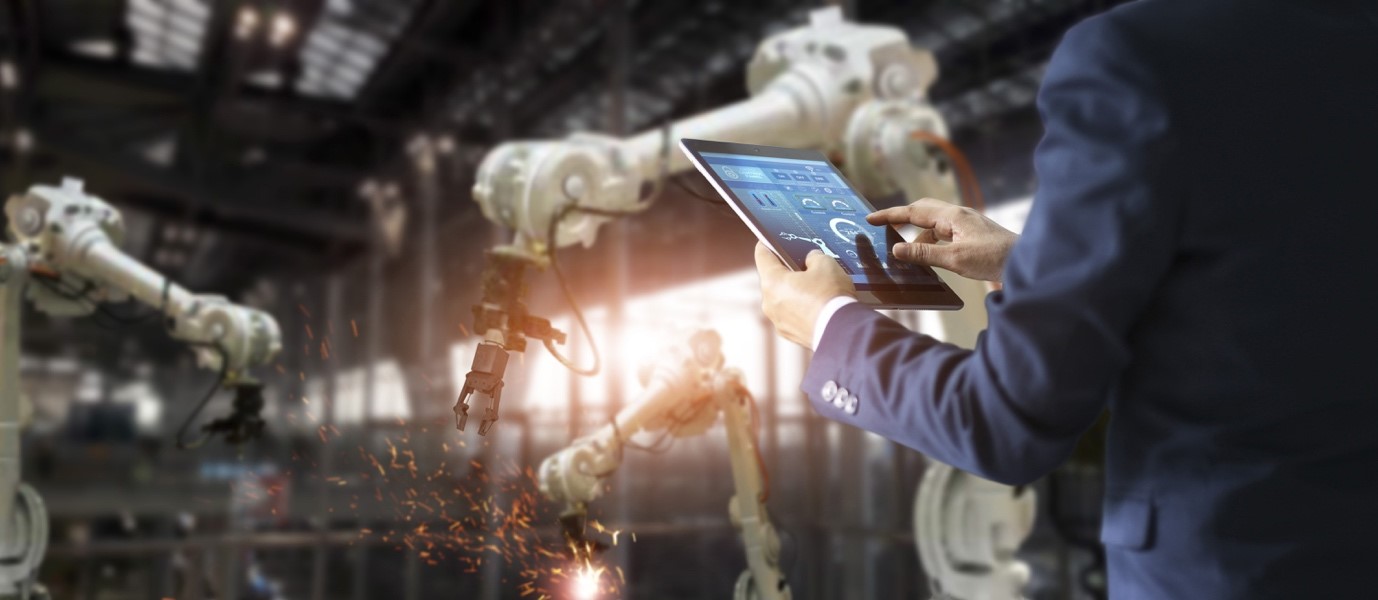
Looking ahead: what’s next for AI in manufacturing?
Post • 3 min read
AI and manufacturing have been on an exciting journey together. It’s a combination that is fast changing the world of manufacturing: 92 percent of senior manufacturing executives believe that the ‘Smart Factory’ will empower their staff to work smarter and increase productivity.


How does AI benefit manufacturers?
Some of the biggest companies are already adopting AI. Why? A big reason is increased uptime and productivity through predictive maintenance. AI enables industrial technology to track its own performance and spot trends and looming problems that humans might miss. This gives the operator a better chance of planning critical downtime and avoiding surprises. But what’s the next big thing? Let’s look to the immediate future, to what is on the horizon and a very real possibility for manufacturers.Digital twinning
‘A digital twin is an evolving digital profile of the historical and current behaviour of a physical object or process that helps optimize business performance.’ - According to Deloitte.
Digital twinning will be effective in the manufacturing industry because it could replace computer-aided design (CAD). CAD is highly effective in computer-simulated environments and has shown some success in modelling complex environments, yet its limitations lay in the interactions between the components and the full lifecycle processes. The power of a digital twin is in its ability to provide a real-time link between the digital and physical world of any given product or system. A digital twin is capable of providing more realistic measurements of unpredictability. The first steps in this direction have been taken by cloud-based building information modelling (BIM), within the AEC industry. It enables a manufacturer to make huge design and process changes ahead of real-life occurrences.Predictive maintenance
Take a wind farm. You’re manufacturing the turbines that will stand in a wind farm for hundreds of years. With the help of a CAD design you might be able to 'guesstimate' the long-term wear, tear and stress that those turbines might encounter in different weather conditions. But a digital twin will use predictive machine learning to show the likely effects of varying environmental events, and what impact that will have on the machinery. This will then affect future designs and real-time manufacturing changes. The really futuristic aspect will be the incredible increases in accuracy as the AI is ‘trained.’Smart factories
An example of a digital twin in a smart factory setting would be to create a virtual replica of what is happening on the factory floor in (almost) real-time. Using thousands or even millions of sensors to capture real-time performance and data, artificial intelligence can assess (over a period of time) the performance of a process, machine or even a person. Cloud-based AI, such as those technologies offered by Microsoft Azure, have the flexibility and capacity to process this volume of data. This would enable the user to uncover unacceptable trends in performance. Decision-making around changes and training will be based on data, not gut feeling. This will enhance productivity and profitability. The uses of AI in future manufacturing technologies are varied. Contact us to discuss the possibilities and see how we can help you take the next steps towards the future.Get in Touch.
Let’s discuss how we can help with your cloud journey. Our experts are standing by to talk about your migration, modernisation, development and skills challenges.

Ilja’s passion and tech knowledge help customers transform how they manage infrastructure and develop apps in cloud.
Ilja Summala
LinkedIn
Group CTO